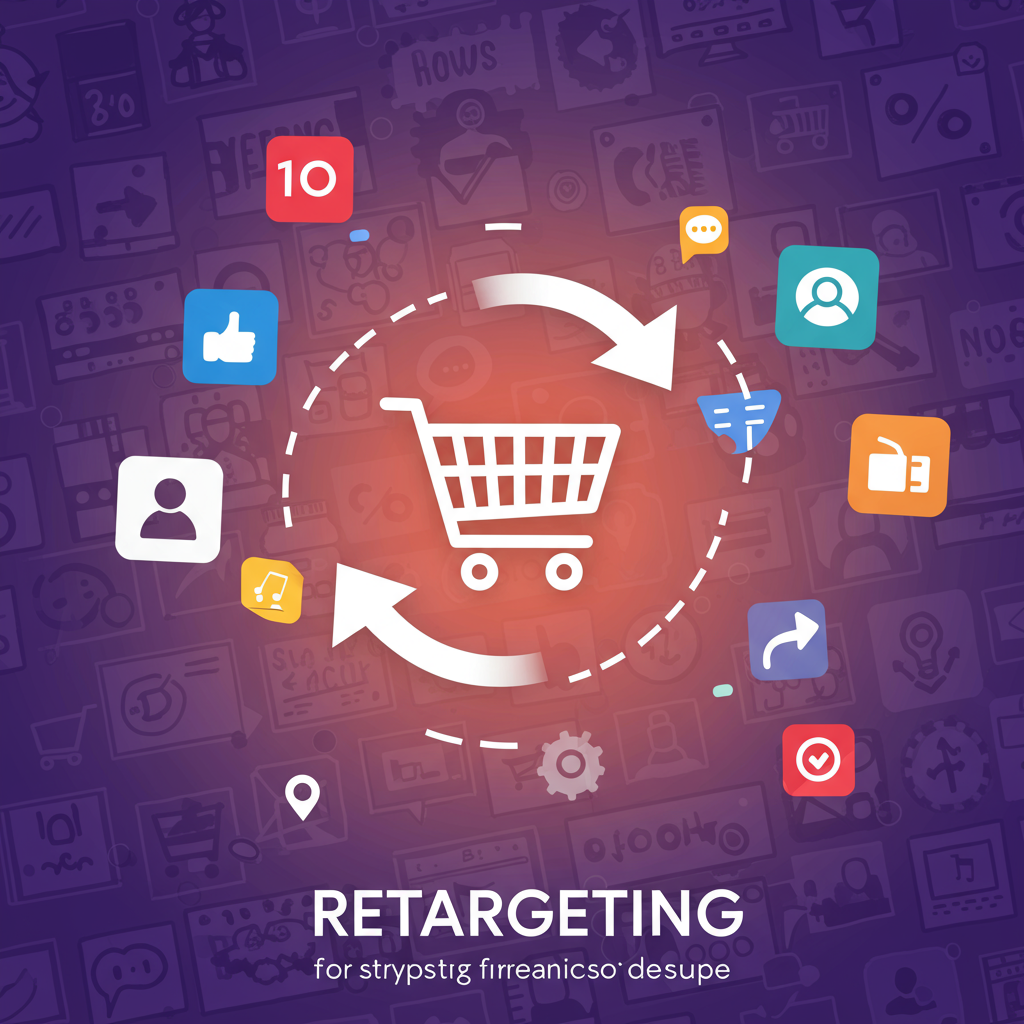Unlock lost sales and boost conversions by re-engaging your Shopify store visitors with powerful Facebook (Meta) retargeting strategies.
Hello fellow Shopify merchants! Today, I want to talk about one of the most powerful tools in our e-commerce arsenal: Facebook Retargeting. If you’re running a Shopify store, you’re likely already driving traffic, but are you converting as many visitors as you could be?
The truth is, most first-time visitors won’t buy immediately. They might be browsing, comparing, or simply not ready. This is where retargeting comes in – it allows us to re-engage those interested individuals and guide them back to our store to complete a purchase.
Think of it this way: someone walks into your physical store, browses a few items, and leaves. Wouldn’t you want a way to remind them about those items later? Facebook Retargeting is the digital equivalent, but far more scalable and precise.
Why Facebook (now Meta)? Because it boasts billions of active users, offering an unparalleled reach. More importantly, its sophisticated advertising platform allows us to target people based on their past interactions with our Shopify store.
Before we dive into strategies, the absolute foundation for successful Facebook retargeting is the Facebook Pixel. If you haven’t installed it yet, stop reading and do that first! Shopify makes this incredibly easy through its integrations.
The Pixel is a small piece of code that you place on your website. It tracks visitor behavior, such as page views, add-to-carts, initiated checkouts, and purchases. This data is gold for creating highly effective retargeting audiences.
Once your Pixel is firing correctly, the next step is to define your retargeting audiences. This is where the magic truly begins. We can create custom audiences based on various interactions.
The most common and often most effective audience is “Website Visitors.” You can target everyone who visited your site within a specific timeframe (e.g., last 30, 60, or 90 days).
However, we can get much more granular. Consider creating audiences for visitors who viewed specific product pages but didn’t add to cart. These are high-intent individuals who showed interest in a particular item.
Another powerful audience is “Add to Cart but Not Purchased.” This group represents abandoned carts, a significant source of lost revenue for many Shopify stores. These are prime candidates for immediate retargeting.
Don’t forget “Initiated Checkout but Not Purchased.” These individuals were even closer to buying! They just needed that final nudge. Your retargeting message for them should be very direct and persuasive.
Beyond website activity, you can also leverage “Customer Lists.” If you have an email list of past customers or leads, you can upload it to Facebook to create a custom audience. This is fantastic for cross-selling or upselling.
Furthermore, Facebook allows you to create “Engagement Audiences.” These include people who have interacted with your Facebook or Instagram pages, watched your videos, or engaged with your posts. While not directly from your Shopify store, they’ve shown interest in your brand.
Now that we have our audiences, let’s talk about campaign structure and ad creatives. For retargeting, Dynamic Product Ads (DPAs) are often a game-changer for Shopify stores.
DPAs automatically show products to people who have viewed them on your website, added them to their cart, or interacted with similar items. They are highly personalized and incredibly effective at reminding shoppers of what they left behind.
To set up DPAs, you’ll need a product catalog connected to your Facebook Business Manager. Shopify integrates seamlessly with this, making it straightforward to sync your products.
When crafting your ad copy for retargeting, remember the goal: to bring them back. Use urgency, highlight benefits, address common objections, or offer a small incentive like free shipping or a discount.
For abandoned cart retargeting, your message should be direct: “Still thinking about it? Your cart is waiting!” or “Don’t miss out on [Product Name]!” A small discount code can work wonders here.
For product page viewers, you might focus on the product’s unique selling points, customer testimonials, or even show related products they might also like.
A crucial aspect of effective retargeting is *exclusion*. You don’t want to show “abandoned cart” ads to someone who just completed a purchase! Always exclude your “Purchasers” audience from your abandoned cart campaigns.
You can also create specific campaigns for past purchasers. These are your most valuable customers! Target them with ads for complementary products, new arrivals, or exclusive offers as a thank you for their loyalty.
Budgeting for retargeting campaigns can be flexible. Start with a modest daily budget and scale up as you see positive results. Focus on conversion objectives, as this tells Facebook to optimize for purchases.
Monitor your frequency. If people are seeing your ads too often, they might get annoyed. Facebook’s reporting tools will show you ad frequency, and you can adjust your audience size or campaign duration if it gets too high.
Finally, always be testing! A/B test different ad creatives, copy variations, offers, and even audience segments. What works for one Shopify store might not work for another. Continuous optimization is key.
Retargeting isn’t just about recovering lost sales; it’s about building a stronger relationship with your potential and existing customers. It’s about being there at the right time with the right message.
I truly believe that mastering these strategies will significantly boost your Shopify store’s conversion rates and overall profitability. It’s an investment that pays dividends.
What do you think about these strategies? Have you implemented any of them, or do you have other tips to share? I’d love to hear your thoughts and experiences.
So, go forth, set up those audiences, launch your campaigns, and watch your Shopify sales grow! Your customers are waiting for that gentle reminder.






